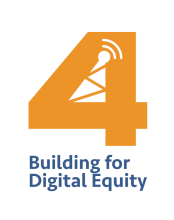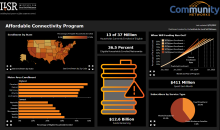Laura Breeden on the Start of NDIA and Some Digital Equity History - Building for Digital Equity Podcast Episode 12

Laura Breeden, board member of the National Digital Inclusion Alliance, joins us to talk about the beginning of NDIA - which happened in a bar among friends, along with most other good ideas. We also talk about what progress has been made on digital inclusion and reflect on some of the deeper history of the Internet and digital inclusion, going back to the early 1990's.
This show is 17 minutes long and can be played on this page or using the podcast app of your choice with this feed.
Transcript below.
We want your feedback and suggestions for the show-please e-mail us or leave a comment below.
Listen to other episodes here or see other podcasts from the Institute for Local Self-Reliance here.
Thanks to Joseph McDade for the music. The song is On the Verge and is used per his Free-Use terms.



